newly edited, but originally posted at Our Little Tongginator in October, 2009
Now that we’re into the last week of October December, I thought I’d stop procrastinating and write a few posts about Sensory Processing Disorder. I mean, y’all DID know that October is Sensory Processing Disorder Awareness month, RIGHT?
(I’m nothing if not timely.)
*gasp* You mean you DIDN’T know?? Well, you do now. Although I suspect a few of you are totally scratching your heads at the moment, asking yourselves, “umm… what the heck IS sensory processing disorder?” Well, I happen to be a pretend expert, seeing as how I have it, as does my daughter, my nephew, my brother-in-law and quite possibly even my maternal grandma. Because there totally has to be a label for my grandma’s special brand of wackiness. And please ignore the fact that I sport her same label. Because – despite evidence to the contrary – I am NOT wacky.
Much.
Anyways, last October I blogged quite a bit about sensory processing disorder at my personal blog because Our Little Tongginator is primarily an adoption blog and – surprise! – children who experience international adoption often struggle with sensory issues. That’s because, as evidenced by my wacky family tree, SPD is genetic, running in families, but it also tends to appear in premature babies, children who experience stress in utero and children who were internationally adopted.
Why?
Because the nervous system develops throughout a mother’s pregnancy, plus it continues to grow and form during the first year of life. And if a child doesn’t receive adequate stimulation during those formative months, the nervous system doesn’t always form as well as it could. Our Tongginator, whom we adopted at just under a year, was diagnosed with severe sensory delays at 13 months of age, then later received a diagnosis of sensory processing disorder.
So what did those sensory delays look like when we first arrived home?
Well, let me preface this by saying that sensory issues look different for EVERY person, although most people with SPD do struggle with tactile issues. Our little Tongginator is mostly a sensory-seeker, although she is sensory-avoidant in some ways. Taking my cues from Colleen, I thought I would list some of the issues we faced that directly related to the Tongginator’s SPD:
low muscle tone
extreme oral defensiveness
strong desire or need to feel dizzy
delayed gross motor skills
delayed fine motor skills
extreme tactile defensiveness
self-stimulatory behaviors
high pain tolerance
under-responsive to sights and sounds, unless startled – and then over-responsive
strong desire to smell objects
lack of body awareness and body positioning
Umm… yeah… now y’all are thinking, ‘that’s a lot of nonsense words, TM. And I have no idea what they mean.’ So let me describe them a bit, at least when it comes to our Tongginator.
Our Tongginator had (and still struggles a bit with) low muscle tone. The best way to describe it is to call her a “floppy” child. She had a significant head lag even at twelve months. Her arms and legs would just flop down if you raised them, then let go. Her core muscle strength was almost non-existent, causing her to truncate (sit with her hands braced against her feet to support her body) rather than to sit upright.
Extreme oral defensiveness… I cannot even begin to tell you how this phrase causes horrific flashbacks. To quote an occupational therapist within our county’s early intervention program, the Tongginator was “THE most orally defensive child I have ever seen.” At 13 months of age, the Tongginator could not drink thin liquids, only formula that had been rice-flaked to death. She could not handle solid foods that didn’t match the consistency of said Rice Flake Formula. And the Tongginator, being the Tongginator, would rather go on a Three Day Hunger Strike than drink formula that contained slightly fewer rice flakes as compared to the day before. It took six weeks and lots of therapy and grit to rid the Tongginator of rice flakes in her formula. The Tongginator also rejected anything placed in her mouth that was not Already Approved Tongginator Food… this included teethers, infant or toddler toothbrushes, medicine droppers, infant or toddler eating utensils (including chopsticks), straws and sippy cups, toys, and on and on. Interestingly enough, once we overcame the Tongginator’s oral defensiveness, she began to crave strong flavors and textures in her mouth. The child is now obsessed with foods and chewing and all things oral, except for dentist visits, which continue to be a nightmare.
She has always shown a strong desire for or need to feel dizzy. As a baby, she often flung herself backwards while in our arms so that she could hang upside down, then feel a rush as we raised her up again. She spent hours in a doorway jumper, riding her rocking horse and spinning round and round on her sit-n-spin. I used to spend many an afternoon with her at the local playground, pushing her on the swings. The Tongginator also spent her first few months with us head banging both us and objects. And, when she could finally walk, she would spin around in circles with her arms spread wide for long, LONG periods of time. Now? She swings every morning before school. She asks for us to hang her upside down and to “squeeze my head, please, Momma.” All of those things help her to concentrate.
Sensory kids often display delayed gross motor and fine motor skills. Now, it’s di
fficult to know what is an institutional delay and what is sensory, but extreme delays are something to check out, regardless of the cause. The Tongginator did not roll over until 12 months of age, crawled at 15 months and walked at almost 19 months. She did not even begin to consider possibly attempting to self-feed until she was almost 14 months old. We still cope with motor planning issues, which means the Tongginator struggles to figure out how to PLAN movement. Pedaling? Confused her for a very long time. Swimming? Still working on that one. Her fine motor skills are also still delayed, mostly because she can’t figure out how to exert enough force to do certain things, including buttons, zippers, opening up a child gate and such. She possesses excellent handwriting because it doesn’t involve too much push/ pull effort, but she does often complain of hand pain because she presses her pencil too hard into the paper.
Our Tongginator also displayed extreme tactile defensiveness. She hated skin-to-skin contact, and not simply because of attachment issues. The Tongginator pretty much loathed anything touching her skin unless it was 100% cotton, including water, the wind, another person, carpet, wood floors, grass… well, you get the idea. Diaper changes, bath time and pretty much anytime was fairly horrific our first two months home. We ended up dressing her in long pants with long sleeves for several months, even though it was spring and summer in the Washington, DC area. We bought a second wipes warmer, so that we could gently heat lotion in it before applying it to her skin. It took several months of daily exposure to help the Tongginator overcome most of her tactile defensiveness. We still accommodate in some areas. For example, the only tights and panties she wears are from Hanna; we purchase seamless socks; she wears dresses most of the time because she hates feeling constricted around her waist; I could go on and on. Don’t even get me started about the potty training. Oy vey. I once wrote a hysterical post entitled “The Ebb and Flow of Pee,” only the husband wouldn’t allow me to publish it.
Sniff. Sniff.
As for self-stimulatory behaviors? That’s basically a nice way of saying that the Tongginator enjoyed hurting herself. She comforted herself by banging her head into walls or furniture… by picking at her skin (especially her nail cuticles)… and by pulling her own hair. Obviously all of this means that she also has a high tolerance for pain. And illness. Only once has my Tongginator ever clung to me while sick. Turns out she had strep throat, a double ear infection and a urinary tract infection all at once. Poor little gal.
In terms of sights and sounds, the Tongginator showed a strange mix of under-responsiveness and over-responsiveness to life happening around her. For over a year, I took the Tongginator to either the local playground, on a play date or to the tot lot inside our local mall every blessed day.
EVERY BLESSED DAY, Y’ALL.
(Did y’all know that I absolutely loathe the mall?)
The Tongginator craved the busyness of people going to and fro. She loved action and wanted to be in the center of it all. She could not… function, for lack of a better word… if we hung out around the house for even one day. Our first two years home, I planned our days in much the same way that I once created lesson plans for my classes. However – and this is a big however – she did NOT like loud, repetitive noises such as smoke detectors, the microwave timer, a fire alarm and on and on. If those things occurred, she often returned to the hand flapping, rocking, self-stimulating behaviors that once were so prevalent. I can’t tell you the number of times complete strangers (and one idiot nurse) asked me, “is your daughter autistic?” during our first year home.
The Tongginator loves to smell things. Not every child with sensory issues focuses on smells, but – for the Tongginator – this is THE number one issue. The Tongginator loves to smell everything, even stinky things. She finds comfort in smells. I remain convinced that the Tongginator fell in love with her cherished Doggy because Doggy arrived in a package containing a perfumed sachet.
She continues to struggle with body positioning and awareness. In other words, the girl walks into walls, falls off chairs and trips over her own two feet, just like her momma. She also took forever to learn how to dress herself and still can’t quite manage some fine motor tasks, including (hurray!) child gates. She often drops things or slams things down too hard. She craves her special, sensory Tongginator sandwiches. She basically loses track of where her body is in space.
Then again, so does her momma.
There are many more sensory issues that the Tongginator struggles with, but those are the most memorable. SPD is a spectrum, ranging from mild to severe… while the Tongginator is now on the mild to moderate side of things, please understand, y’all, that our experiences during our first year home were some of the most challenging our social worker had ever seen. Add attachment issues, the fight to avoid a failure to thrive diagnosis and my depression to these sensory challenges… and… well… it was a lot. But it was ALL worth it.
Because the Tongginator is worth it.



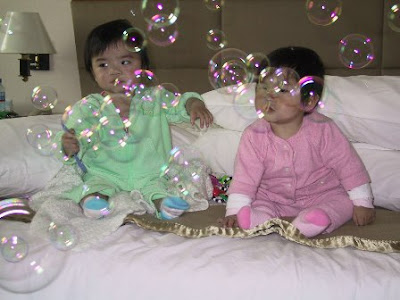


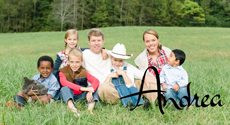



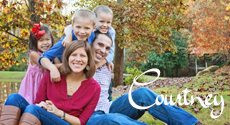





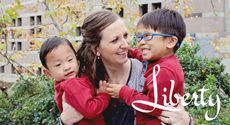
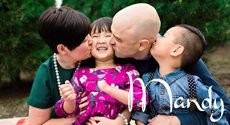









Thanks for posting this. We just finished our first home study & need all of the info we can get!!!
Wow! This is very thorough and informative. I wonder if it is easier to understand and help your daughter because you experience the world in a similar way?
Thank you for sharing two truths. That parenting is never without challenges and that those challenges are outweighed by the love we have for our kids.
Have a blessed new year!
I am SO grateful for your SPD insight. Having a daughter who deals with this, it's wonderful to have it explained so thoroughly 🙂
I could have written this post to describe my 4 year old daughter!! Luckily I knew the difference between SPD and ASD, since she really presented as a child on the ASD spectrum. Thanks for the post…it really hit home. The key is good intervention and a lot of PATIENCE!! A correct diagnosis helps too LOL
So interesting to read about SPD again. My oldest daughter and my youngest were on the scale to some degree as infants to about 5 or 6. Now they have become less defensive and have apparently figured out some coping skills. My youngest didn't wear clothes for years whenever she could get away with it. She's also a smeller! I laughed about the Hanna underwear as that is the only kind that my oldest would wear. Those things last forever. Tic Tac Toe socks were the seamless sock of choice for us. I can so relate to many of your sensory "skin" issues on the parental side. Made me crazy at times until I realized what it was. The oldest owned no pants at age 5, only loose cotton dresses. I remember my mil noting how nicely I dressed her to play on the beach, not my choice just the only thing she'd wear! If her clothes got wet at all she changed. At preschool she learned to turn them around quick as a flash and have the "icky wet" part in back. A coping mechanism that worked when she was away from a fresh dress. 😉 Believe it or not at 13 1/2 she wears skinny jeans, shirts with lace on the edges and more. Would never have believed we'd get there!
Wow! That's quite a story. You and she have been through a lot! We had of course read a great deal about this pre-adoption, and I was braced for SO much worse than we actually experienced. Reading this, I realize just how lucky we (and our daughter) were in dodging a lot of these bullets.
I loved how much I learned from this post when I first read it, and have actually gone back to the ideas presented quite often since. I've noticed some of this in two of my boys in minor degrees over the years but see a lot of it in Li'l Empress especially when she is over tired, sick, or in a stressful situation. Good stuff.
I love that you posted this. We just brought our daughter home December 5th and she suffers from a rather horrible "case" of SPD. She broke her leg as a 12 month old and was in a body cast in her crib for several months and then remained in her crib with no toys until she was 19 months old. It is welcoming to hear that I am not the only mother struggling with this issue. And, I think it is great to put these symptoms out on this page so that others can read them and possibly understand their child a bit better.
Good luck!
Thank you for sharing this, it helps so many parents.